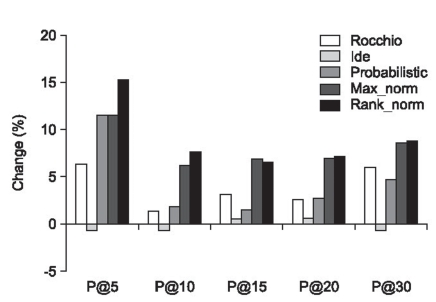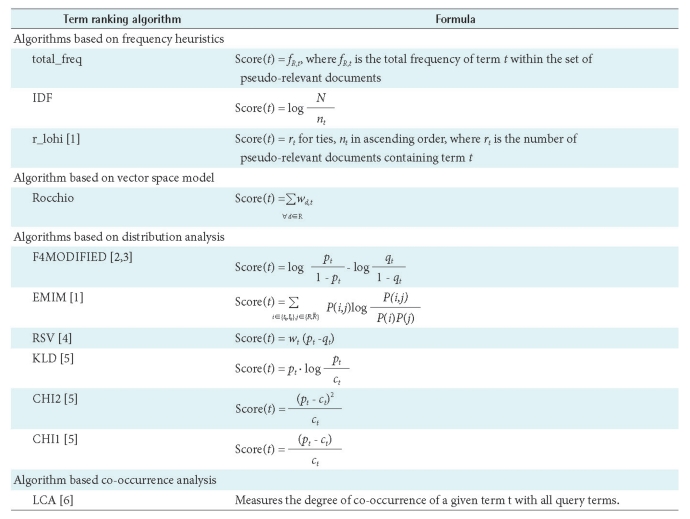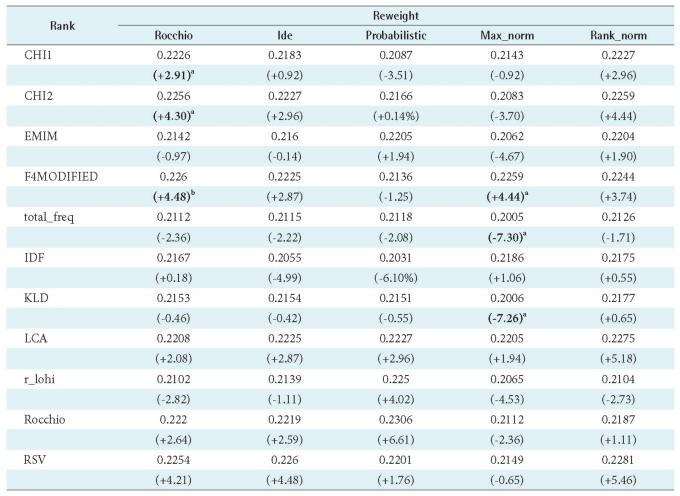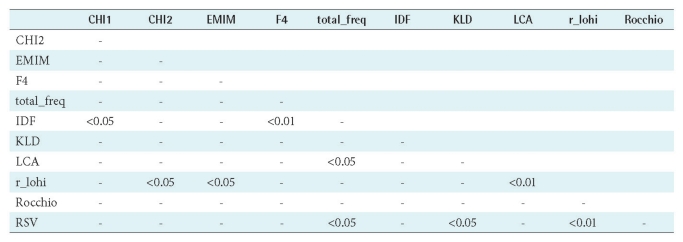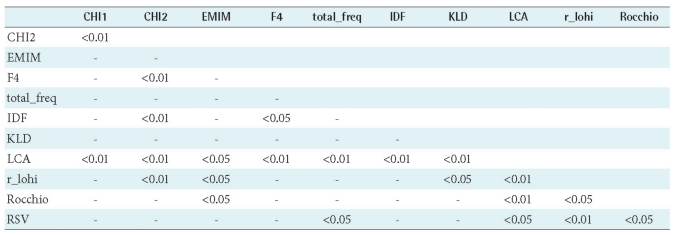1. Hersh WR. Information retrieval: a health and biomedical perspective. 2003. 2nd ed. New York: Springer.

2. Nankivell C, Wallis P, Mynott G. Networked information and clinical decision making: the experience of Birmingham Heartlands and Solihull National Health Service Trust (Teaching). Med Educ 2001;35:167-172. PMID:
11169091.

3. Haux R, Grothe W, Runkel M, Schackert HK, Windeler HJ, Winter A, Wirtz R, Herfarth C, Kunze S. Knowledge retrieval as one type of knowledge-based decision support in medicine: results of an evaluation study. Int J Biomed Comput 1996;41:69-85. PMID:
8803668.

4. Bernstam EV, Herskovic JR, Aphinyanaphongs Y, Aliferis CF, Sriram MG, Hersh WR. Using citation data to improve retrieval from MEDLINE. J Am Med Inform Assoc 2006;13:96-105. PMID:
16221938.

5. Vechtomova O, Wang Y. A study of the effect of term proximity on query expansion. J Inf Sci 2006;32:324-333.

6. Srinivasan P. Technical Report 1528. Exploring query expansion strategies for MEDLINE. 1995. Ithaca, NY: Cornell University.

7. Srinivasan P. Retrieval feedback in MEDLINE. J Am Med Inform Assoc 1996;3:157-167. PMID:
8653452.

8. Hersh W, Buckely C, Leone TJ, Hickam D. Ohsumed: an interactive retrieval evaluation and new large test collection for research. Proceedings of the 17th Annual International ACM SIGIR Conference on Research and Development in Information Retrieval. 1994. Dublin, IE: Springer-Verlag Inc.; p. 192-201.

9. Yu H, Kim T, Oh J, Ko I, Kim S, Han WS. Enabling multi-level relevance feedback on PubMed by integrating rank learning into DBMS. BMC Bioinformatics 2010;11(Suppl 2):S6PMID:
20406504.

10. States DJ, Ade AS, Wright ZC, Bookvich AV, Athey BD. MiSearch adaptive PubMed search tool. Bioinformatics 2009;25:974-976. PMID:
18326507.

11. Yoo S, Choi J. On the query reformulation technique for effective MEDLINE document retrieval. J Biomed Inform 2010;43:686-693. PMID:
20394839.

12. Aronson AR, Rindflesch TC, Browne AC. Exploiting a large thesaurus for information retrieval. Proceedings of Recherche d'Information Assistee par Ordinateur (RIAO). 1994. New York: ACM; p. 197-216.

13. Yang Y, Chute CG. An application of least squares fit mapping to text information retrieval. Proceedings of the 16th Annual International ACM SIGIR Conference on Research and Development in Information Retrieval. 1993. Pittsburgh, PA: ACM; p. 281-290.

14. Yang Y, Chute CG. Words or concepts: the features of indexing units and their optimal use in information retrieval. Proc Annu Symp Comput Appl Med Care 1993;685-689. PMID:
8130562.

15. Yang Y. Expert network: effective and efficient learning from human decisions in text categorization and retrieval. Proceedings of the 17th Annual International ACM SIGIR Conference on Research and Development in Information Retrieval. 1994. Dublin, IE: Springer-Verlag Inc.; p. 13-22.

16. Hersh W, Price S, Donohoe L. Assessing thesaurus-based query expansion using the UMLS metathesaurus. Proceeding of the AMIA Symposium. 2000. Los Angeles, CA: Hanley & Belfus; p. 344-348.

17. Chu WW, Liu Z, Mao W, Zou Q. A knowledge-based approach for retrieving scenario-specific medical text documents. Control Eng Pract 2005;13:1105-1121.

18. Efthimiadis EN. Query expansion. Ann Rev Inf Sci Tech 1996;31:121-187.

19. Harman D. Relevance feedback revisited. Proceedings of the 15th Annual International ACM SIGIR Conference on Research and Development in Information Retrieval. 1992. Copenhagen, DK: ACM; p. 1-10.

20. Efthimiadis EN, Brion PV. UCLA-Okapi at TREC-2: query expansion experiments. Proceedings of 2nd Text Retrieval Conference. 1994. Gaithersburg, MD: National Institute of Standards and Technology; p. 200-215.

21. Carpineto C, de Mori R, Romano G, Bigo B. An information theoretic approach to automatic query expansion. ACM Trans Inf Syst 2001;19:1-27.

22. Fan W, Luo M, Wang Li, Xi W, Fox EA. Tuning before feedback: combining ranking discovery and blind feedback for robust retrieval. Proceedings of the 27th Annual International ACM SIGIR Conference on Research and Development in Information Retrieval 2004;2004. Sheffield, UK; New York, NY: ACM; p. 138-145.

23. Xu J, Croft WB. Improving the effectiveness of information retrieval with local context analysis. ACM Trans Inf Syst 2000;18:79-112.

24. Buckley C. Technical Report TR85-686. Implementation of the SMART information retrieval system. 1985. Ithaca, NY: Cornell University.

25. Lovins JB. Development of a stemming algorithm. Mech Transl Comput Linguist 1968;11:22-31.

26. Robertson SE, Walker S. Okapi/Keenbow at TREC-8. Proceedings of the 8th Text Retrieval Conference (TREC-8). 2000. Gaithersburg, MD: National Institute of Standards and Technology; p. 151-162.

27. Baeza-Yates R, Ribeiro-Neto B. Modern information retrieval. 1999. New York: ACM Press.

28. Robertson SE. On relevance weight estimation and query expansion. J Doc 1986;42:182-188.

29. Robertson SE. On term selection for query expansion. J Doc 1990;46:359-364.

30. Rocchio JJ. In: Salton G, Relevance feedback in information retrieval. editors. The SMART retrieval system. 1971. Englewood Cliffs, NJ: Prentice-Hall; p. 313-323.

31. Ide E. In: Salton G, New experiments in relevance feedback. editors. The SMART retrieval system. 1971. Englewood Cliffs, NJ: Prentice-Hall; p. 337-354.

32. Carpineto C, Romano G, Giannini V. Improving retrieval feedback with multiple term-ranking function combination. ACM Trans Inf Syst 2002;20:259-290.

33. Hull D. Using statistical testing in the evaluation of retrieval experiments. Proceedings of the 16th Annual International ACM SIGIR Conference on Research and Development in Information Retrieval. 1993. Pittsburgh, PA: ACM; p. 329-338.












